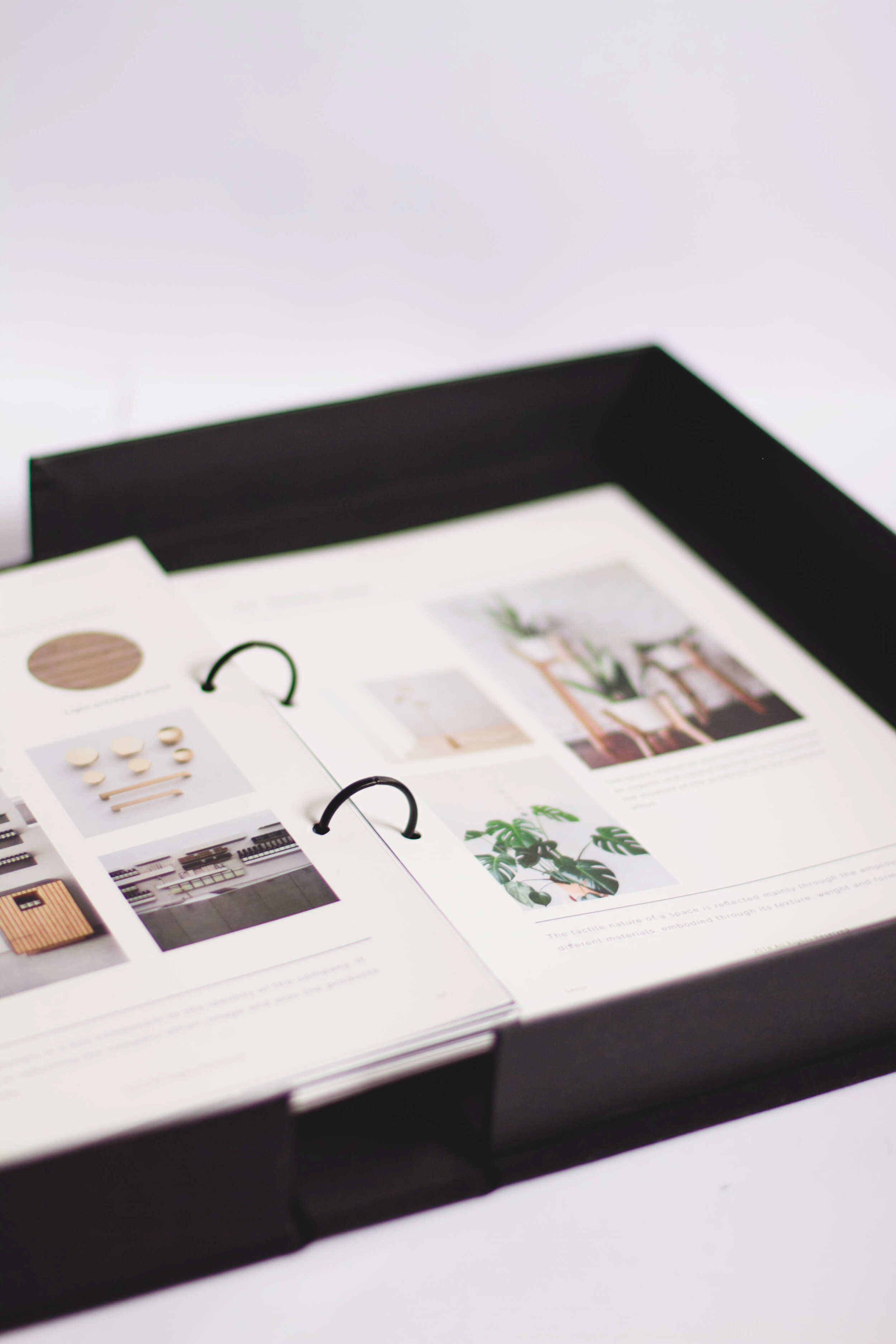
DISSERTATION
CONSUMERISM:
THE FIVE SENSES
Brief Write a 5,500 academic piece of writing on a chosen topic accompanied by a visual outcome
I took upon a critical approach to my investigation where I dissected retail design strategies into the five senses and explored how each are employed in businesses of various sizes and natures. There is a completely other dimension of design that occurs on a subconscious level through the understanding of the fundamentals of perception.
I discovered so much more about the capabilities of consumer-centric design and how successful design can be in establishing a defined channel of communication via the human senses. Music has the ability to control human pace and scents can recollect memories without any thought. If it is so successful in stimulating consumerism in the retail industry, why can’t we use graphic design to create something more beneficial to society?
“As the field of graphic design continues to expand and ‘our world unfolds rapidly around us’ (What is Ontological Design?, 2014), we begin to question what else graphic design could do. Although my investigation looked at sensory experiences in retail industries specifically, it has proven that it does in fact have the potential in functioning on a grander scale. Human behaviour is a complex system; triggered by conscious and subconscious cues, and perception is the foundation of human experience. With the continuous progression in technological advancement, it becomes even more feasible and achievable to imagine how sensory experiences could be incorporated into our everyday lives. If a song could make us move at a certain speed, a smell remind us of a time or place, or a colour make us feel a certain way; why aren’t we doing something more with the knowledge of sensory perception? If graphic design could so effectively influence consumerism in the retail industry through the subtle manipulations of sensory marketing, could we utilise this asset to propose solutions for social, political, cultural issues that persist in the world today?
Issues that exist today are much more substantial with greater consequence, and we should be focusing on utilizing graphic design in profitable ways; to progress society to a better and more sustainable future. Our world has been so built upon the fact that human beings are formed with the five senses, when in reality, one in
thirty individuals live with a visual impairment (Transversal, 2014) and one in six individuals live with hearing loss (Actiononhearingloss.org.uk, n.d.) in the United Kingdom alone. If we begin to identify critical issues in our society, we could take steps in constructing society that dissolves or dilutes some issues through the knowledge of human behaviour, human psychology and sensory perception. For example, 615 million people suffer from anxiety or depression in 2016, compared to the 416 million in 1990. If the world is built to house us, why aren’t we seeing innovative sensory solutions for individuals with learning difficulties, sensory impairment or mental health or even utilizing the human senses in engineering, architecture and science. ‘We are being actively designed by that which we have designed’ (Are We the Designers or the Designed?, 2016). This is where I believe, Graphic Design could play its part. ‘Just as you grow into the world, the world grows into you. Not only do you occupy a certain place, but that place, in turn, occupies you. Its culture shapes the way you see the world, its language informs the way you think, its customs structure you as a social being’ (Bradatan, 2017). Graphic Design beholds an enormous power, one that is so easily overlooked because of its position in the creative industry. I believe that it is time, that us as Graphic Designers begin to push the boundaries of our field; to innovate, create and construct what we wish to see in our future.”
SENSI
DESIGN COMPONENT

My outcome is my proposal for a better future. This future could potentially exist tomorrow as the technology, products and design already exists; but without a space, platform or name to promote them. I called the business ‘Sensi,’ a store and business that believes in bettering society through inspiring individuals to focus on personal happiness and well-being. Sensi is built upon the existence of innovative sensorial products that could be integrated into any space to create a therapeutic safe environment to tackle stress, anxiety, tension, emotional grief or mood fluctuations.




